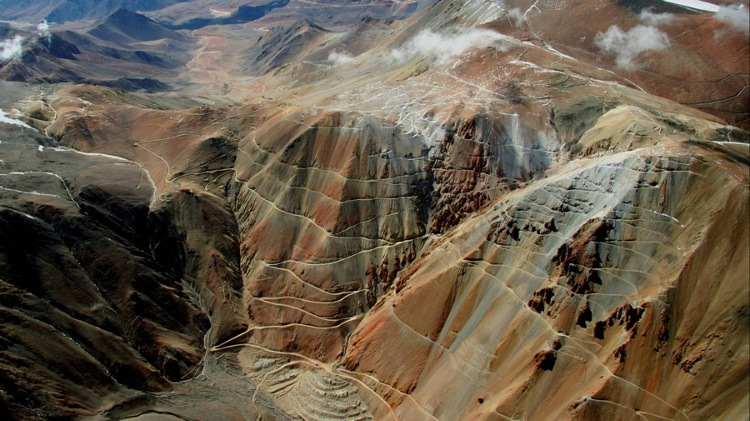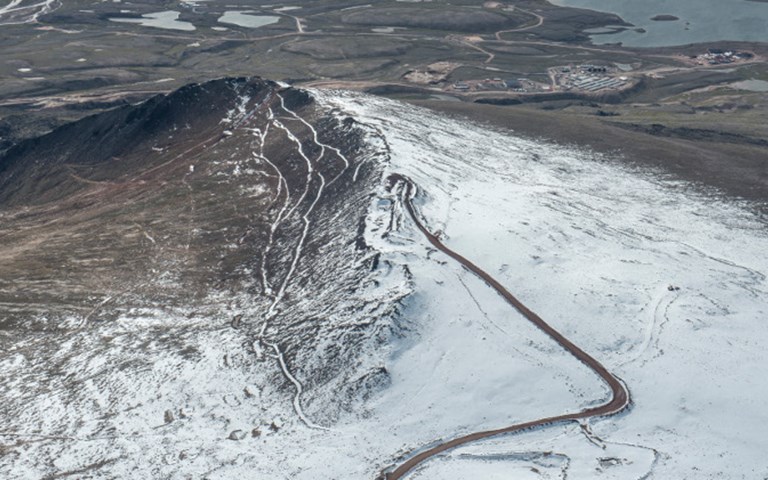Mary River's Deposit 1, seen from the sky with the camp in the background, has an anticipated life of 21 years. Courtesy of Baffinland Iron Mines
Increased funding for education and training for local Inuit communities are the focus of a new impact benefit agreement (IBA) for Baffinland Iron Mines’ Mary River mine.
Baffinland and the Qikiqtani Inuit Association (QIA), a non-profit society that represents 13 Inuit communities in the Qikiqtani region of Nunavut, announced the changes to the agreement on Wednesday, updating the one originally signed in 2013.
Included among the changes are the construction of a $10-million regional training centre that will include heavy equipment training and housing for Inuit families, and can act as a shared space for the community of Pond Inlet; as well new opportunities for internships in non-mining company roles like human resources or finance. The agreement also includes more resources for community members to monitor the impact of the project on the environment, including several marine research vessels to be purchased over the next 12 years.
“The signing of the Amended IBA represents another major step in our commitment to deliver on our promise to bring employment and training opportunities to the Qikiqtani region,” Baffinland president and CEO Brian Penney said in a statement. “It also reflects the strong relationship between Baffinland and QIA, as we continue to find new ways to work in partnership and understand how we can continue to move forward and make a real difference for all Nunavummiut.”
While the deal includes several millions of dollars in increased funding, Stephen Williamson Bathory, special adviser to the president of QIA, said that Baffinland was willing to negotiate.
“What we ended up finding out after the first few sessions was that there was very clear alignment on a lot of topics, as well as a clear will for the company to get over the hump of maybe being questioned as to their commitment to the agreement and their delivery of benefits,” Bathory said. “There was a strong will on both sides to not just negotiate this agreement but really start to enhance and deliver improved benefits.”
Related: Creative solutions to mining's skills shortage
Baffinland and the QIA also agreed to priority hiring for Inuit in all Baffin communities, new internship programs and increased resources to help retain hired employees and advance their careers. They also agreed on an eventual target goal of 50 per cent Inuit employees at the mine, a significant increase from the previous target of 25 per cent.
The new goal might be considered an ambitious milestone to reach. A May 2017 report from Nunatsiaq placed the current Mary River Inuit employment rate at just 100 people, or 12.5 per cent of the workforce. Bathory cited the lack of a dedicated approach to training as one of the reasons why the employment rate was so low.
“What we've learned collectively is the amount of effort it took to actively and proactively implement [the agreement] is far greater than first perceived,” he said.
The new agreement aims to help combat some of those issues with funds to allow more accessible travel from the different Inuit communities to the mine, Inuit specific HR and counselling, and including a written guide in the IBA on how to properly implement the changes.
“You see [operational procedures] for things like road maintenance, like blasting, like acid rock drainage management,” Bathory said. “We've just converted that thinking into [delivering] benefits. How do you train? How do you run procurement processes?”
The IBA was originally signed in September 2013, and is renegotiated every three years. The final version of the updated agreement is expected to be officially signed in April 2019.



